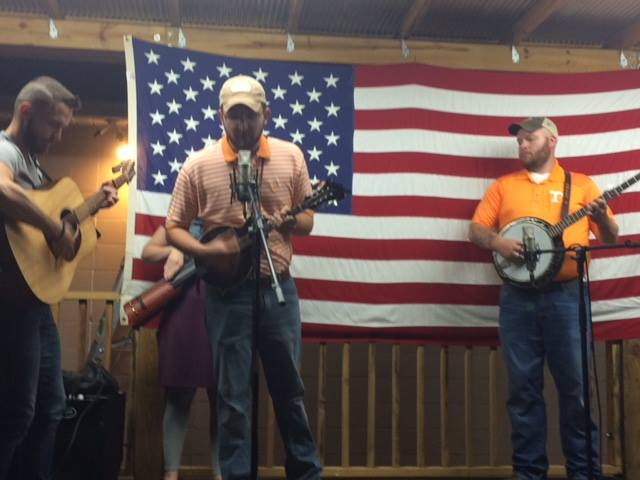“It Came to Pass”
/Clarkrange Sunset - Photo by Derek Lane
The KJV Bible uses the term “It came to pass” some 453 times. A devotion I read several weeks ago brought this to my attention and it’s stuck with me. History is important in God’s Word. Winston Churchill is often quoted as saying, “Those who fail to learn from history are doomed to repeat it.” (The quote actually originated with George Santayana and Mr. Churchill was quoting him! It’s one of my very favorite Churchill quotes and I know you’ve heard me use it before.) Not to put Churchill’s wisdom on-par with divinely inspired scripture, but maybe it’s something we all need to learn – history matters.
The Bible gives us fully twelve books of history – there’s a ton of history throughout God’s Word, but these books are solely devoted to recording historic events and consequences in the national life of The Children of Israel. History really seems to matter to The Lord.
I know I’m hammering this point home and maybe this whole article is justification for the hours I spend at this keyboard composing articles and even books inspired by our history. I had the opportunity to speak to a group of genealogists a couple of years ago and chose to urge them to preserve not just facts but stories. And that’s what we see in God’s word – we get to know the characters of these books of history. Nehemiah served a Persian king and Esther would be a Persian queen. We see in their stories the anguish of life in a pagan land, torn from the land divinely promised to their ancestors and to them. We can see the real people behind the heroic acts – Esther is terrified when she approaches her husband without being summoned and while Nehemiah doesn’t detail his fears it’s not hard to understand fear as well as anger as he is taunted and ridiculed while rebuilding Jerusalem’s walls.
Maybe the stories of the Cumberland Plateau don’t have the eternal application of those biblical accounts but they can still be inspiring. I’ve said before that the people of the mountain not only survived but thrived in a time and place that would have simply killed most of us. They faced down disease and famine with the same staunch heroism we envision in the Shepherd David before a lion or a giant.
As I trace genealogical roots I get so excited to see a picture behind the numbers and dates presented in census records or death certificates. I’ve recently been researching a mystery-man in my family tree. He was born in 1877 and more skilled researchers than I have attributed him to my Great-great-great grandfather’s family. That man was born in Virginia and came to Tennessee with his parents and many of his 15 siblings. I’ve always known of that Virginia history but never considered relatives left there. Well in researching Calip Todd, I found one of his daughters on the 1920 census, living with her “cousin” – that’s the relationship given to the head of the household – back in Virginia. I still can’t find much information on Calip but I began to see a story there. The family came to Tennessee but 2 or 3 of the children were grown and already married so they opted to stay in Virginia and watch their whole family ride into the western horizon – just like a good ole’ Western movie, huh? But they kept in touch, as much as they could in that day anyway. Both those left in Virginia as well as the ones in Tennessee raised children and told them about their family living in another part of the country. What took Bessie back to Virginia I don’t yet know but just like generations before and after she found a home with her cousin.
I’ll keep working on that story and many others that peek out at me from among the data I’m mining from old records. And I keep listening to the stories – and remembering stories I heard before like we talked about last week when a recent story reminded me of something from a man who passed away 13 years ago had told me.
I want to end today’s blog with 2 challenges for you. If you have not picked up your Bible today, do so now. Or just click here to go to www.BibleStudyTools.com. If you don’t know where to start, read one of the stories from the books of history, Joshua through Esther – they are the best stories ever written and never grow old.
Secondly I challenge you to share a story with someone else. You’ve got ‘em, I know you do. Stories you’re granny told you as she patted out biscuits for supper or your Mama as you sat breaking beans together. Maybe you heard it from an old friend as he lay abed in his last days. If it came to pass then it’s probably worth sharing and someone in this world would love to hear it. If you can’t think of anyone, click on comments below and TELL ME – I always want to hear the stories.













